The Inspiring and Amazing Temple Caves of Ajanta
![]()
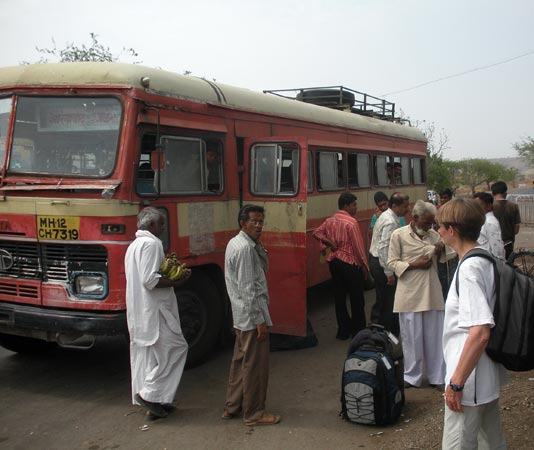 After six weeks of urban living in the Malviya Nagar neighborhood of Delhi, we were ready to be on the road again. We flew to Aurangabad, visited the Ellora caves, and then set out by bus for Fardapur to visit Ajanta. After a normal Indian bus ride of several hours through rolling, arid hills, the driver stopped at an intersection and called out 'Ajanta', motioning to us to get off. We got down with our wheely bags in tow and looked around to see the Ajanta Visitor Entrance before us. We were there !
After six weeks of urban living in the Malviya Nagar neighborhood of Delhi, we were ready to be on the road again. We flew to Aurangabad, visited the Ellora caves, and then set out by bus for Fardapur to visit Ajanta. After a normal Indian bus ride of several hours through rolling, arid hills, the driver stopped at an intersection and called out 'Ajanta', motioning to us to get off. We got down with our wheely bags in tow and looked around to see the Ajanta Visitor Entrance before us. We were there !
We hired a tut-tut to take us the short distance to the Maharashtra Tourism Development Corporation (MTDC) lodge. After check in and lunch, with the ambient temperature well above 40 degrees Centigrade causing the pavement to feel like a griddle, we spent the rest of the day inside, studying the information we had along to organize our visit to Ajanta site.
To provide a bit of background, eons ago, the force of a monsoon fed river carved out a curving volcanic escarpment into the edge of the Deccan Plateau. In 150 BCE to 100 CE, Hinayana Buddhist architects and stone masons settled here and created the first two Chaitra-grihas (temples) and three Viharas (monasteries)of the temple caves, carved from the live rock of the escarpment.
Later, in the second half of the fifth century CE, under the financial patronage and religious stimulation of Vakataka Emperor Harisena and his courtiers, more architects, stone masons and, most essentially, many artists again came to live and work at Ajanta. In a surge of construction, the other 25 caves were carved and lavishly decorated with sculptures and paintings depicting the stories of the Buddha and his devotees.
After our afternoon of study, we emerged into the golden evening heat just in time for the parade of the village cows through the lodge property. After many weeks in India, we were used to this. We proceeded to dinner at the lodge cafe, where we realized that we were two of perhaps only four guests - the lodge was nearly empty as few people visit Ajanta in this heat!
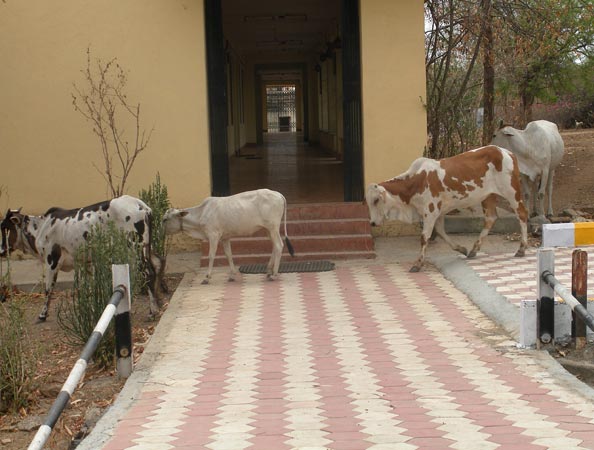
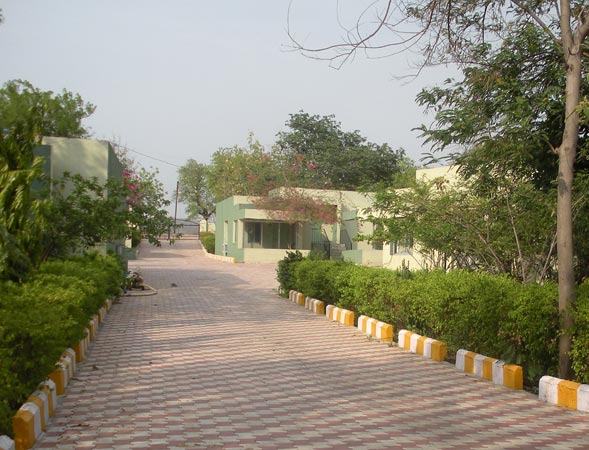
After dinner, we walked out to the road to a small collection of stalls to buy fruit for breakfast and then retreated back to our room. Inside, we were cool and comfortable until, just after dark, the power failed (we were also quite used to this)! We slept in the dark with open windows and woke to a cooler, cloudy morning, perhaps the coming of the awaited monsoons?
To take full advantage of this break in the heat, we quickly ate and hired a tut-tut to take us to the Visitor Entrance. From there, the caves are about 4 kilometers away, so we purchased tickets for the Green Bus that delivered us to the site entrance, a cluster of buildings including a cafe, the ticket booth and the signs introducing us to the site.
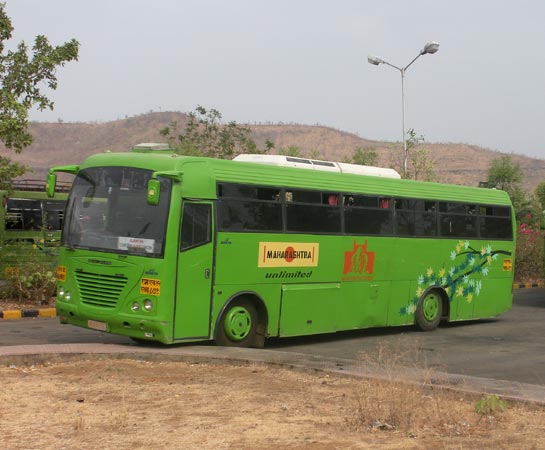

We climbed the massive construction of concrete stairway and ramps that enable the growing number of visitors to reach the walkway in front of the caves. Before us was the great curve of the escarpment with carved cave entrances fully visible.
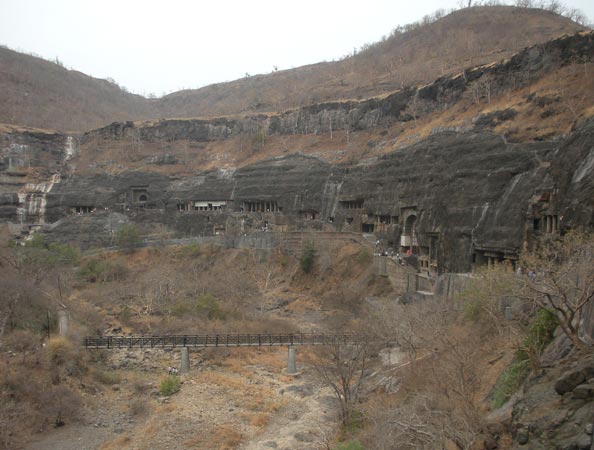
The entrance to Cave 1, the temple of Emperor Harisena, with its massive carved columns, provided the introduction to Ajanta. Inside, in dim light, we could see the murals and deeper inside, the image of the Buddha sat serenely, eliciting calm. On adjoining walls were figures of numberous devotees.
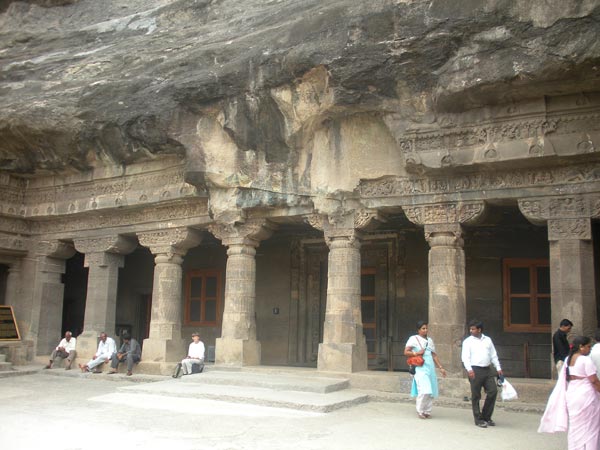
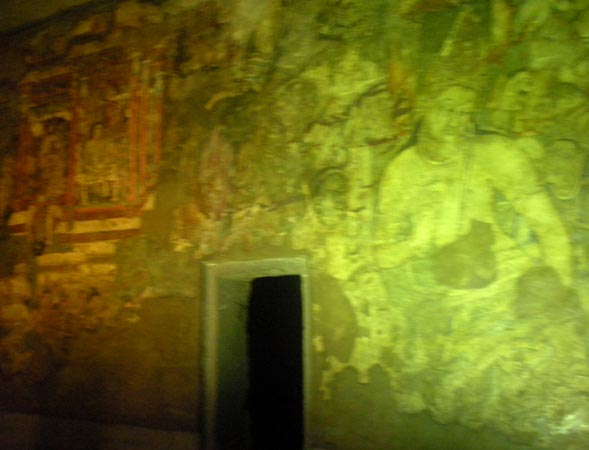
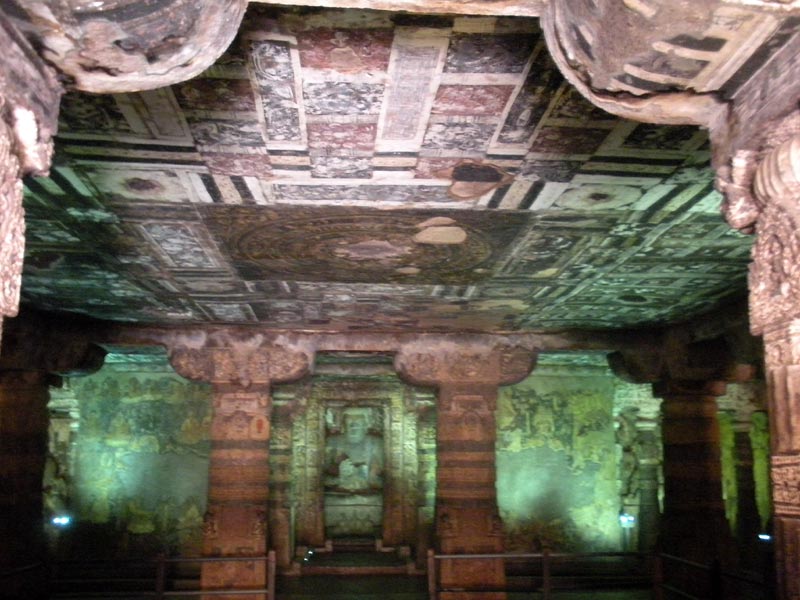
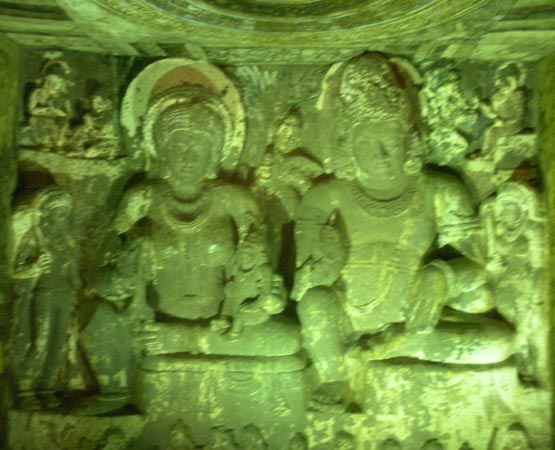
In a nearby cave, we were again amazed by Buddha serenely sitting in an exquisitely carved room, guarded by devotees.
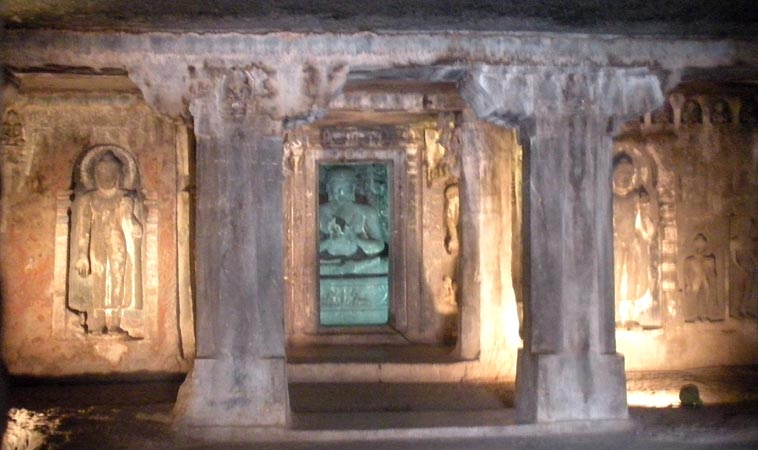
Begining to realize the grandeur of this place, we walked on to enter other caves...
... some with elaborately carved entryways. We learned that the somewhat unsightly wooden frames in the openings served the valuble purpose of keeping out the bats and birds that could cause significant damage to the interior paintings.
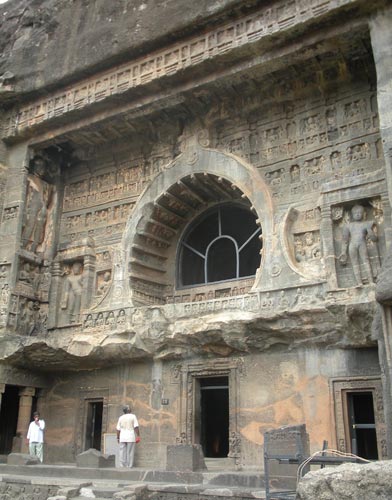
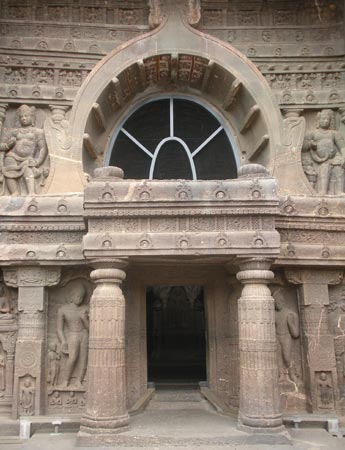
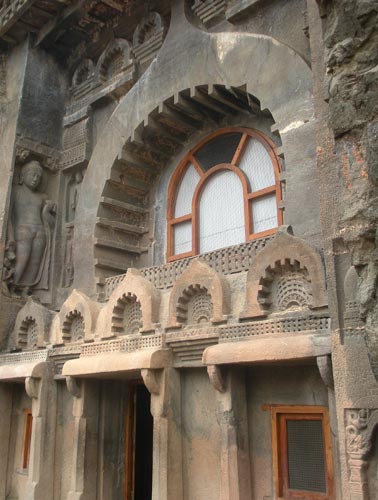
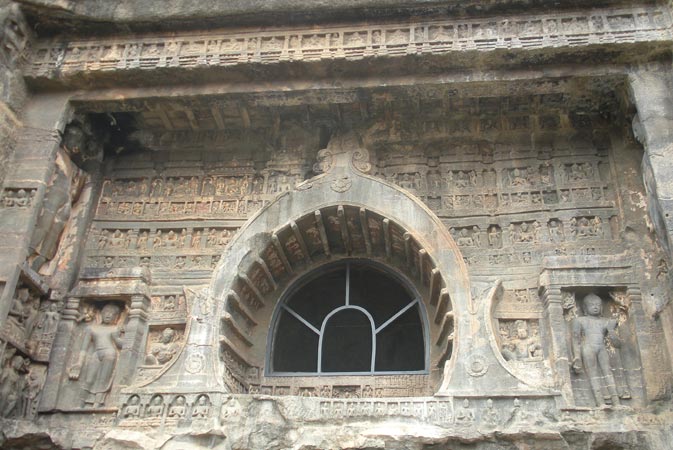
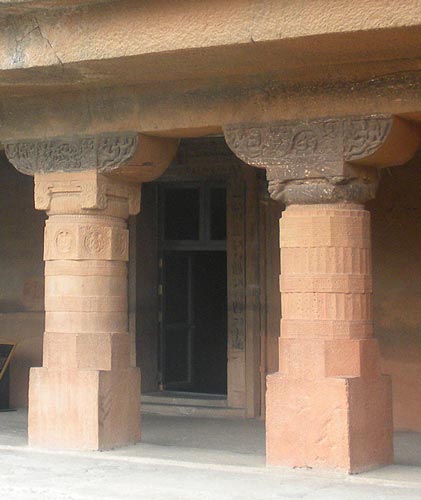
... some with interior chambers with richly painted walls, columns and ceilings,
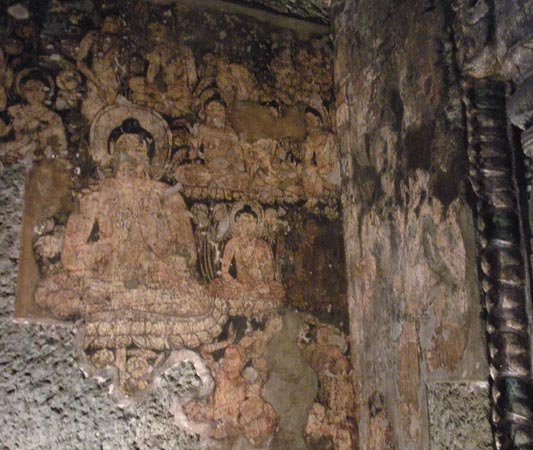
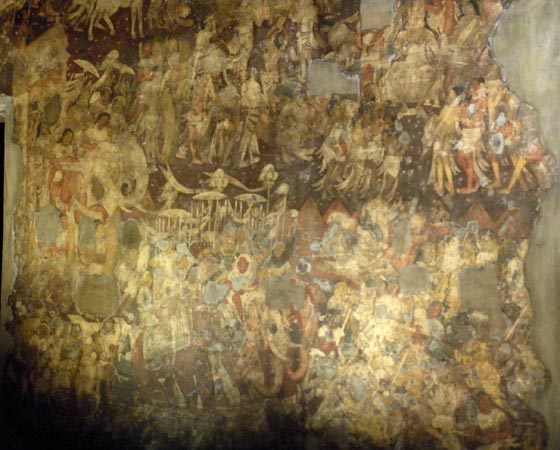
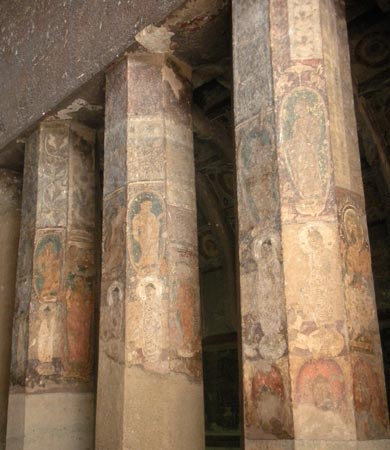
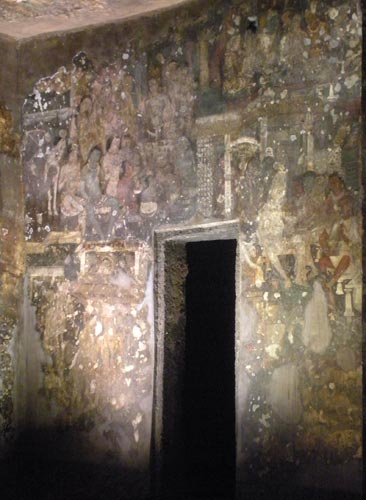
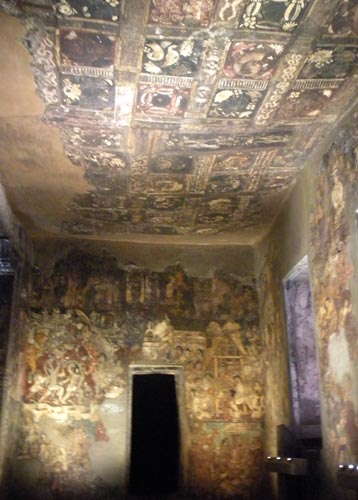
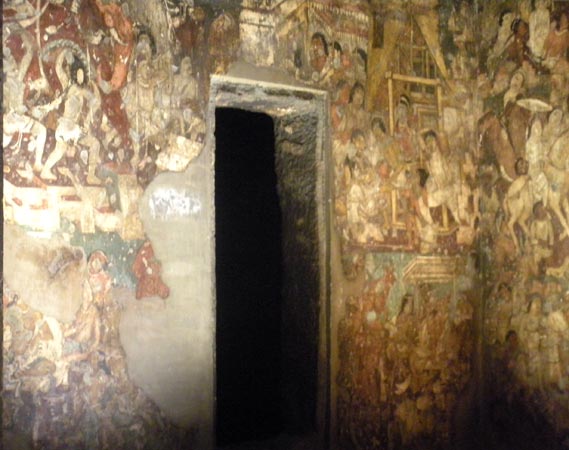
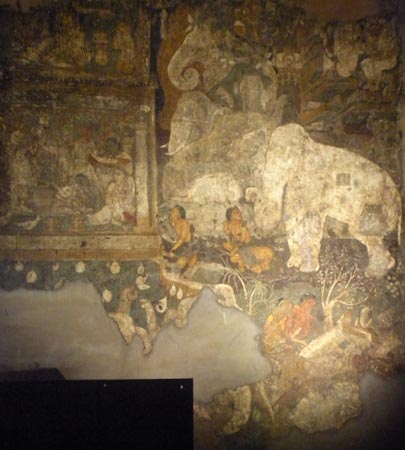
... and others consisting of stupas with serene Buddhas surrounded by columns, and arched ceilings carved to look like barrels overhead.
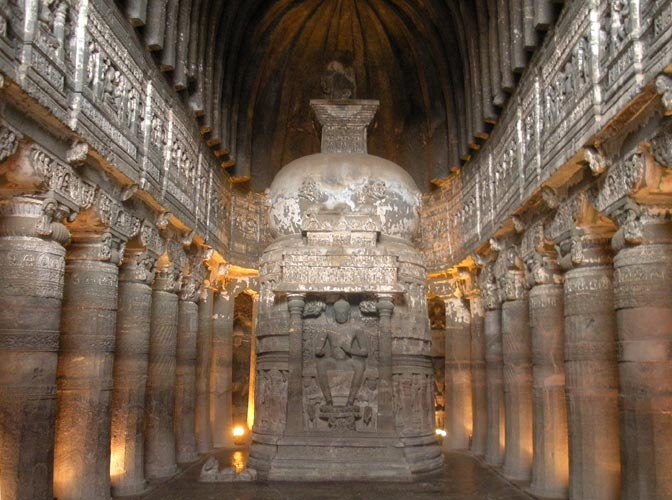
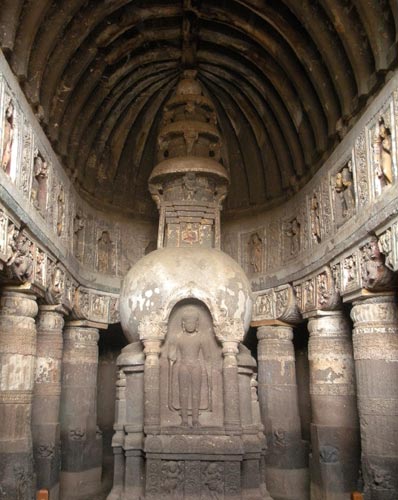
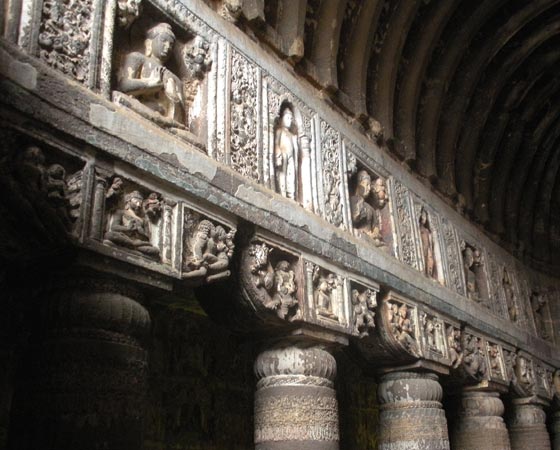
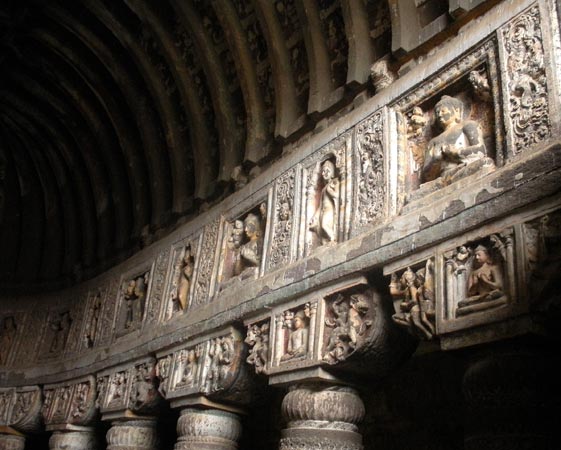
In Cave 26, we visited an exquisite Reclining Buddha, surrounded by incredible carvings of devotees.
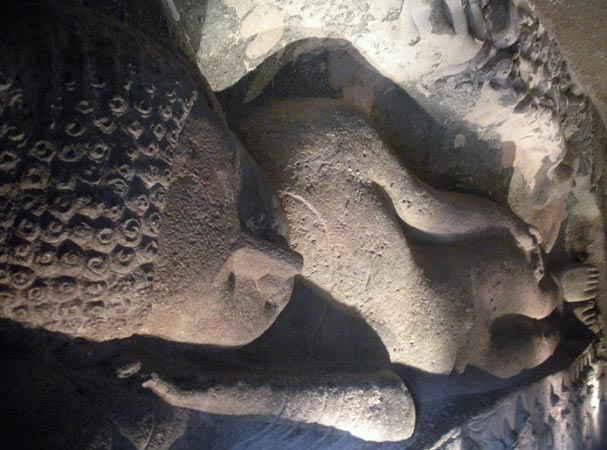
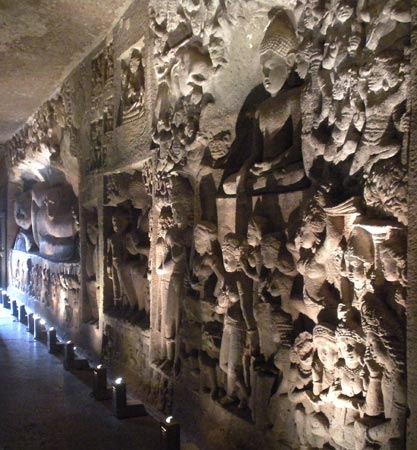
Returning along the same path, we stopped to admire Elephant Gate, through which, in past times, pilgrims entered the site.
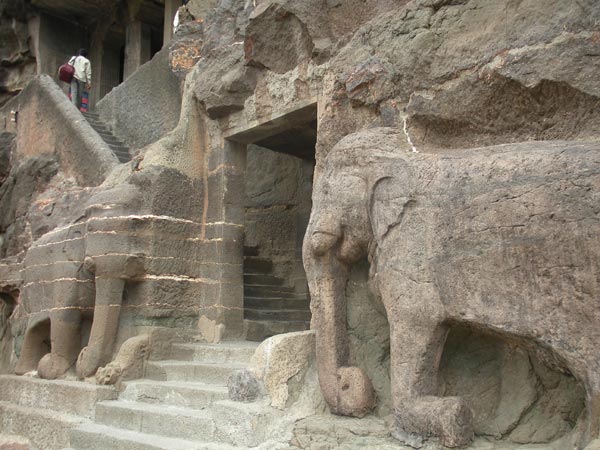
Our awe of this place grew with each cave we visited. We struggled to understand the labor and expertise needed to carve out the masses of rock to form the temples and then, to carefully prepare the walls for painting. The greatest mystery was to imagine how the artists executed these bright and detailed scenes and carefully carved figures in the minimum amount of light that penetrated through the doorways!
Our visit to the temple caves was inspiring, amazing, spiritual and filled us with wonderment as we tried to imagine that special time long ago when so many great artists and architects and stone cutters/builders gathered to create these stunning places.
Click here to return to Our Revisiting India - 2009 page
![]()